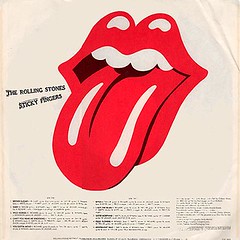 |
| Yup, more on this flag... |
A couple weeks ago, I put up a post about a flag flying at Manassas during the Sesquicentennial commemoration. It elicited a nice response from a friend of mine, Robby, who hails from the great state of North Carolina. Robby loves to play devil's advocate, so I'm always happy to wade further into a friendly conversation:
...When a historian is unable to understand the southern affinity for the men who fought the war, almost to a person you see the slavery straw man emerge. This action is akin to politicians playing the race card, an easy way out of a confusing and hyper complex situation. In the end, most will not understand the paradoxical nature of southern feelings about the war and its outcome. They will denigrate flags, passion, and the oft-mentioned heritage as hallmarks of a society still stuck in the throes of antebellum histrionics. This is a gross simplification cast as philosophical enlightenment that is in reality a lack of such. Group think feeds group think in the end.
OK, so here's the gist - slavery is at the core of the Confederate cause. It lies somewhere wedged in there wherever you look. It is the fundamental difference between the United States Constitution and the Constitution drawn up in Montgomery in 1861. It is Stephens' "Cornerstone." I take J.S. Mosby at his word in 1907 when he said: "The South went to war on account of slavery." Slavery is the heart of the Confederacy's philosophical reason for being.
Now, it is right that where it gets sticky is in the individual motivations. But here's my deal on that: that uniform is a real sticking point. The uniform of an enforcement officer, military or civilian, is a symbol. Put on a uniform and you are representing something. When a police officer puts on his uniform, he is no longer a citizen; he becomes the voice of the municipality he serves. When a soldier dons his uniform in a war zone like Afghanistan, he becomes the emissary and voice of the United States or Great Britain or wherever he is from. By donning that uniform, he either tacitly admits to agreeing with the policies of his nation or vows to hold his tongue to some greater or lesser extent while that uniform is on his back.
| The Rolling Stones perform Sympathy for the Devil at Altamont in 1969. |
The Confederate uniform, that grey or butternut tunic and pants that men wore; that Confederate (1st, 2nd, 3rd... take your pick) National Flag they carried; that rifle issued from the gates of the armories at Fayetteville or Richmond: all were potent symbols of a nation. Anyone carrying those hard iron symbols, wearing those wool symbols on their backs or marching under their symbolic cotton folds was becoming a voice of a nation through their action, regardless of their individual beliefs. Just as when seeing a set of lips on a t-shirt, it is a fair question to ask, "what do you think of Altamont?" when you see a historical figure in a gray uniform, it is a fair question to ask of them, "what did they think of slavery?" They have already opened themselves to the topic and started making a statement by their decision to put on that wool coat.
 |
| The Tongue and Lips first appeared on the album Sticky Fingers, which featured the hit single Brown Sugar, itself publicly debuted at Altamont in 1969. |
So, what do I think of Altamont? That was some screwed up stuff, man. It never should have happened. It's really tough for me to listen to Under My Thumb now. The Stones' music isn't inherently violent. But the Angels and the crowd in 1969 were spoiling for a fight. Nothing could have stopped it, not even the entreaties of the Jester prancing across the stage. Altamont was an irrepressible conflict.








